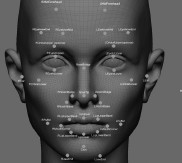The European Times wrote about hockey fans in Washington state who had more to worry about during a recent hockey game than avoiding a puck to the face; the Department of Homeland Security, DHS, tested their facial recognition system during the game, a technology that’s raising concerns among privacy advocates.
DHS utilized a sophisticated scheme of cameras to collect pictures of attendees in real-time from as far away as 100 meters and then match them up with images of faces stored on a database.
The exercise marked the latest drill for the DHS’ Biometric Optical Surveillance System, or BOSS, and when it’s fully operational it could be used to identify a person of interest among a massive crowd in the span of only seconds.
With assistance from researchers at the Pacific Northwest National Laboratory, PNNL, DHS attempted to quickly compare faces caught on camera with the biometric information of 20 volunteers. The other faces in the crowd — potentially 5,980 hockey fans — existed as background noise to see the accuracy of BOSS when it comes down to locating a person of interest.
Facial recognition technology has been around for almost three decades. The mobile and social revolutions are rapidly driving the field forward, along with digital photo proliferation, cloud computing power acceleration and software capabilities advancing.
According to Charlie Savage of the New York Times, earlier testing proved unsuccessful because it took operators roughly 30 seconds to identify a person caught on camera with its database of photographic mug shots. Biometric specialists who spoke to the Times told Savage that 30 seconds “was far too long to process an image for security purposes.”
As surveillance cameras continue to become pervasive in American cities, fixed on buildings and in traffic lights, facial recognition technology could soon be used to pick people out of crowds randomly for essentially anything.
“This technology is always billed as antiterrorism, but then it drifts into other applications,” Ginger McCall of the Electronic Privacy Information Center told Savage. “We need a real conversation about whether and how we want this technology to be used, and now is the time for that debate.”
Meanwhile, the Federal Bureau of Investigation hopes that it will have its state-of-the-art Next Generation Identification program, also known as NGI, rolled out in 2014, which will ideally provide the FBI with a database containing the biometric information of millions of Americans. Law enforcement will then be able to use that trove of data to compare persons of interest caught on film with images already used on state drivers’ licenses and other governmental files.
A lawsuit against the FBI filed by the Electronic Frontier Foundation, EFF, over the NGI program is currently pending. In the complaint filed earlier this year, the organization wrote;
The proposed new system would also allow law enforcement to collect and retain other images, such as those obtained from crime scene security cameras and from family and friends, and would allow submission of civil photographs along with civil fingerprint submissions that were collected for non criminal purposes.
“Facial recognition blows up assumptions that we don’t wear our identities on our person; it turns our faces into name tags,” said Ryan Calo, director of privacy at Stanford’s Center for Internet and Society. “It can be good and helpful, or it can be dangerous.”


It can be good, it can be helpful, and it can be dangerous.






